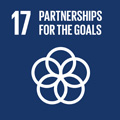- Docente: Claudia Golino
- Credits: 6
- SSD: IUS/05
- Language: Italian
- Teaching Mode: In-person learning (entirely or partially)
- Campus: Bologna
-
Corso:
Second cycle degree programme (LM) in
Law and Economics (cod. 9221)
Also valid for Second cycle degree programme (LM) in Law and Economics (cod. 5913)
Learning outcomes
At the end of the course students have knowledge of the criteria and principles governing the intervention of the State in the market, also in relation to the European Union.
Course contents
The course aims to analyse the relationships between the law system and economic behaviors, the relationships between State and markets, in a european perspective.
In particular, the course aims to analyse:
- Economic Constitution
- Public intervention in the economy
- State aid legislation
- Competition Law
- Cohesion policy
- European Social model
- Public finance
Readings/Bibliography
The teacher will propose the reading materials, which will be uploader on the Virtuale (https://virtuale.unibo.it/).
However, the following books are recommended:
S. CASSESE, La nuova Costituzione economica, (cap. I, II, IV, V, IX, X) Roma, ultima edizione.
G. F. FERRARI, Diritto Pubblico dell'economia (cap. III, VI, VII, VIII, XII, XIII, XVIII, XX), Milano, 2019, terza edizione.
N. IRTI, L'ordine giuridico del mercato, Roma, 1998.
G. AMATO, Il mercato nella Costituzione, 1992, in Quaderni Costituzionali.
G. DELLA CANANEA-G. NAPOLITANO, Per una nuova Costituzione economica, Bologna, 1998
Teaching methods
The teaching method is that of the frontal lesson. During the course, group works will also be carried out for the analysis of practical cases. Attending students will be able to prepare the exam on notes and deepen the program on the recommended texts.
Assessment methods
The evaluation shall be carried out in two different ways:
A) Working paper
1. preparation of a group working paper (Max 2 - 4 people), the subject of which will be assigned at the beginning of the course;
2. ppt presentation during the last two lessons of the assigned subject;
3. orla examination with 1 question.
The final vote is so composed:
70% ppt presentation + Working paper
30% final oral exam.
B) Oral examination
The evaluation will be carried out through the oral examination with 4 open questions.
18-23: the student has sufficient preparation and analytical skills, spread however, over just few topics taught in the course, the overall jargon is correct
24-27: the student has more than a sufficient preparation, but he/she shows some doubts over the topics. Good analytical skills with the use of a correct jargon
28-30: Deep knowledge about most of the topics taught in the course, good critical skills
30L: excellent knowledge of all the topics tackled during the course, as well as excellent usage of technical jargon
ATTENTION: Assessment methods could change due to the Covid-19 emergency.
Teaching tools
Power Point Presentations
Office hours
See the website of Claudia Golino
SDGs


This teaching activity contributes to the achievement of the Sustainable Development Goals of the UN 2030 Agenda.
